Interview with Karine S. Carvalho
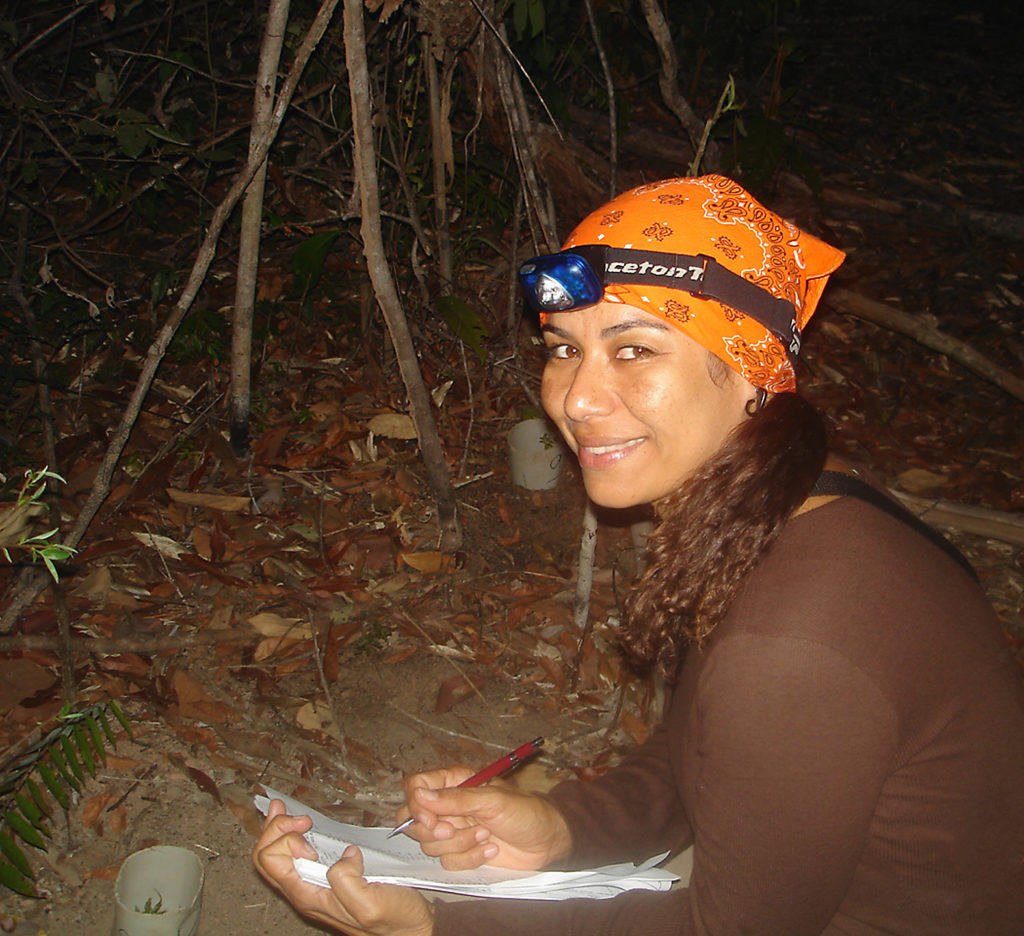
Karine S Carvalho is a biologist and professor at the State University of Southwest Bahia, Brazil. Her main focus is on the conservation of biodiversity in tropical ecosystems. She is thus interested in ecological interactions between ants and plants, ants as an engineer of ecosystems, and ants as bioindicators of environmental changes. Here, she talks about her research, her scariest moment, and her myrmecological idols.
An Interview compiled by Émeline Favreau, Patrick Krapf, and Alice Laciny

MNB: Could you tell us a bit about yourself?
KSC: I grew up in a very small city, where the horizon was very close and I was always sure that I wanted to go out and see the world. At the first opportunity, I didn’t think twice, I went. I went to the Amazon, which was a watershed in my life. The Amazonas has definitely changed my life forever.
I am a person of the world. Traveling is vital for me as I think that getting to know other places and cultures is essential to broaden our worldview.
I am a very spontaneous person and I think this is my greatest quality and perhaps my greatest weakness as well. I love nature, dogs, and alternative people. I am a very positive person and I always try to find the good in every situation.
MNB: Could you tell us about your research?
KSC: I study ant community ecology and ant-plant interactions in an ecosystem context. All of my research, in some ways, uses ants as a bioindicator of environmental “quality”, that is, everything can be used for the conservation of tropical biodiversity.
MNB: How did you end up studying ants?
KSC: My Zoology Professor, Dr. Max de Menezes, introduced me to Dr. Jacques Delabie, Coordinator of the Myrmecology Laboratory at the Cocoa Research Center, CEPEC in Itabuna, BA, where I started an internship and I fell in love with the ants. From there, I went to do an internship with Dr. Heraldo Vasconcelos at the National Institute for Research in the Amazon (INPA) in partnership with the Smithisonian Institute, in Manaus. This was undoubtedly the most important experience with ants in my life. At this stage I really found that I wanted to study ant-plant interactions my whole life. Dr. Heraldo Vasconcelos is my biggest inspiration in this choice.
MNB: If you had not become a myrmecologist, what else would you have liked to become?
KSC: In fact, before I became a myrmecologist, I was a biologist and I always asked myself this question, because I don’t see myself doing anything else in life, I really love my profession. I don’t know what it would be… Maybe a veterinarian, because of my love for dogs, but I’m not sure because I can’t stand to live with suffering and pain, which are very present in the health area.
MNB: What is your motivation for doing ant research now? What do you enjoy most about ant research?
KSC: Insects in general fascinate me. In fact, I love “invertebrate” animals, especially arthropods for their abundance and diversity.
So, within that context, I chose ants for their extreme importance in terrestrial ecosystems. Ants can be ecosystem engineers (along with earthworms and termites), participate in numerous ecological interactions (e.g., predation, dispersion), help in the degradation of organic matter, have evolutionary relationships with various plant species, among other factors. In other words, ants are incredible organisms to study from the point of view of biodiversity conservation.
MNB: What was the biggest obstacle you had to overcome in ant research?
KSC: I think that at various stages of my life I had to overcome some obstacles. For example, hard field work in the Amazon, during my Master’s degree. Currently, is the scarcity of financial resources to conduct research at my university, my biggest obstacle.
MNB: Who or what inspired you to pursue a career in myrmecology?
KSC: First, Jacques Hubert Charles Delabie, who “introduced” me to the ants.
My biggest inspiration is definitely Edward O. Wilson, he is my main myrmecological idol!
My book “The Ants” written by him and Bert Hölldobler (another great myrmecologist that I have a huge admiration for) is signed by him, and I’m very proud of it! A friend, who did his PhD at Harvard, bought this book for me, and asked him to sign it for me.

Edward O. Wilson’s signature on the book “The Ants” (© Karine S. Carvalho).
Bert Hölldobler and Karine during the Ant Meeting 2011- Petrópolis, RJ, Brazil (© Karine S. Carvalho).
MNB: What would you do differently if you could start all over again?
KSC: I wouldn’t change my academic life at all. For me, it’s perfect!
MNB: During your research, what was the scariest moment?
KSC: When I discovered an “alien” living in my belly! A berne (MNB: human bot fly) fly larva that develops by eating living tissue. The adult fly lays eggs in places like leaves, for example, and arthropods like ticks, can be mechanical vectors of this), which is a fly larva, spent months eating my tissues. When I first went to the doctor, he told me it was a boil. I treated it with antibiotics and hot water compresses. But, months later, the larva started to move inside me! This was crazy!
MNB: What was the most irritating moment in your life so far?
KSC: Living with ticks throughout my field research during my PhD. That was crazy!
MNB: And what was the moment you enjoyed most?
KSC: It is impossible to choose just one moment from so many years! But, without a doubt, my two Amazonian experiences Master’s and PhD were the most beautiful and important of my academic life. Sleeping in the middle of the Amazon jungle, surrounded by noise and the murmur of animals or listening to the storms, were unforgettable moments.
MNB: What is the one thing you wish everyone knew about ants?
KSC: I would like everyone to know that humanity would suffer without the ecosystem services of ants.

Karine, other researchers, and undergraduate and graduate students … 
… during field research in the Mata Atlantic Forest, Bahia, Brazil (© Karine S. Carvalho).
MNB: Do you have a favorite morphological structure / myrmecological phenomenon?
KSC: Yes. I love the behavior and natural history of army ants, leaf-cutting ants and ant gardens.
MNB: Do you have a favorite ant species?
KSC: Atta spp, but I also really like the species that make up the “army ants” group and the myrmecophyte species (like Azteca spp) and those that make ant garden. They are all wonderful ants !!!
MNB: What is the book on your bedside table?
KSC: I prefer to quote my favorite writer: Gabriel García Márquez
MNB: Watching sports or doing sports?
KSC: Physical activities: pilates and walking. Yoga practice.
MNB: Listening to music or playing an instrument?
KSC: Unfortunately, I don’t play any instruments but I love listening to music
MNB: Do you enjoy the evening or the morning?
KSC: I am more productive in the morning.
MNB: Tea or coffee?
KSC: Coffee.
MNB: Habit or change, what do you prefer?
KSC: Change.
MNB: Cooking yourself or going out having dinner?
KSC: My husband cooks every day.
MNB: Aspirator or forceps?
KSC: Forceps.
MNB: Nest densities or pitfall traps, what do you prefer?
KSC: Depends on research question.
MNB: Field work or lab?
KSC: Field work.
MNB: Pin or ethanol?
KSC: For myrmecological collections, pin. For genetic analysis, ethanol.
MNB: Paper printed out or reading on the laptop?
KSC: Reading on the laptop.
MNB: Journals financed by the author (open access) or by the reader (subscription based). What do you prefer?
KSC: Open access.
MNB: Kin selection or group selection?
KSC: Kin selection.
MNB: Do you prefer monodomy or supercoloniality?
KSC: Supercoloniality.
MNB: Do you prefer the workers or the queens in an ant colony?
KSC: Workers.
MNB: Thank you for this interesting interview.
KSC: I thank you for the beautiful opportunity!

Karine, other researchers, and undergraduate and graduate students … 
… during field research in the Mata Atlantic Forest, Bahia, Brazil (© Karine S. Carvalho).

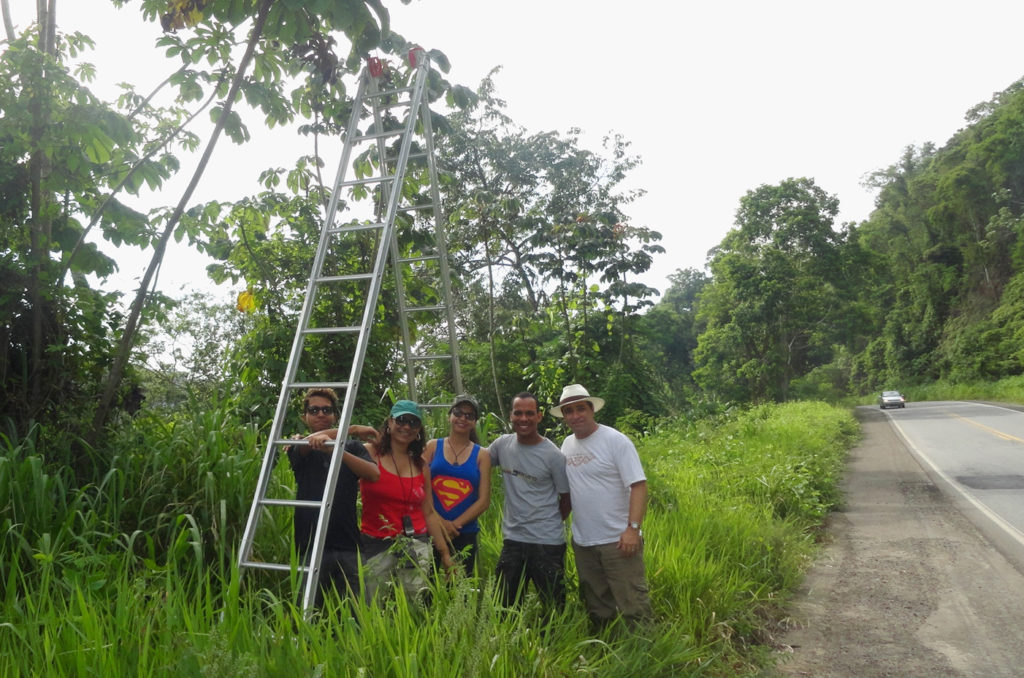
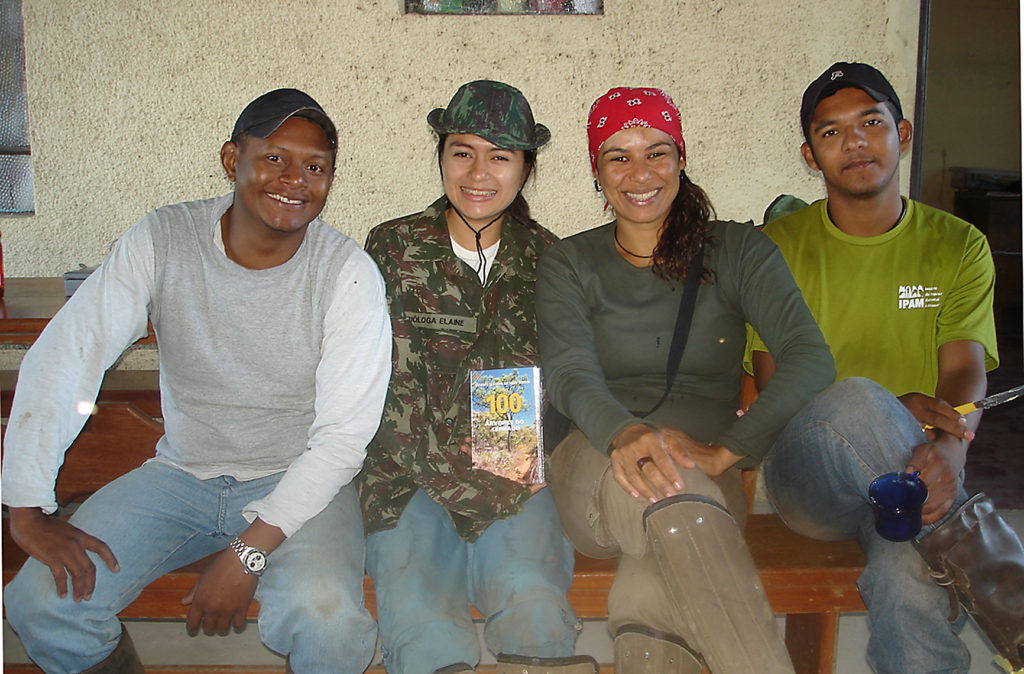
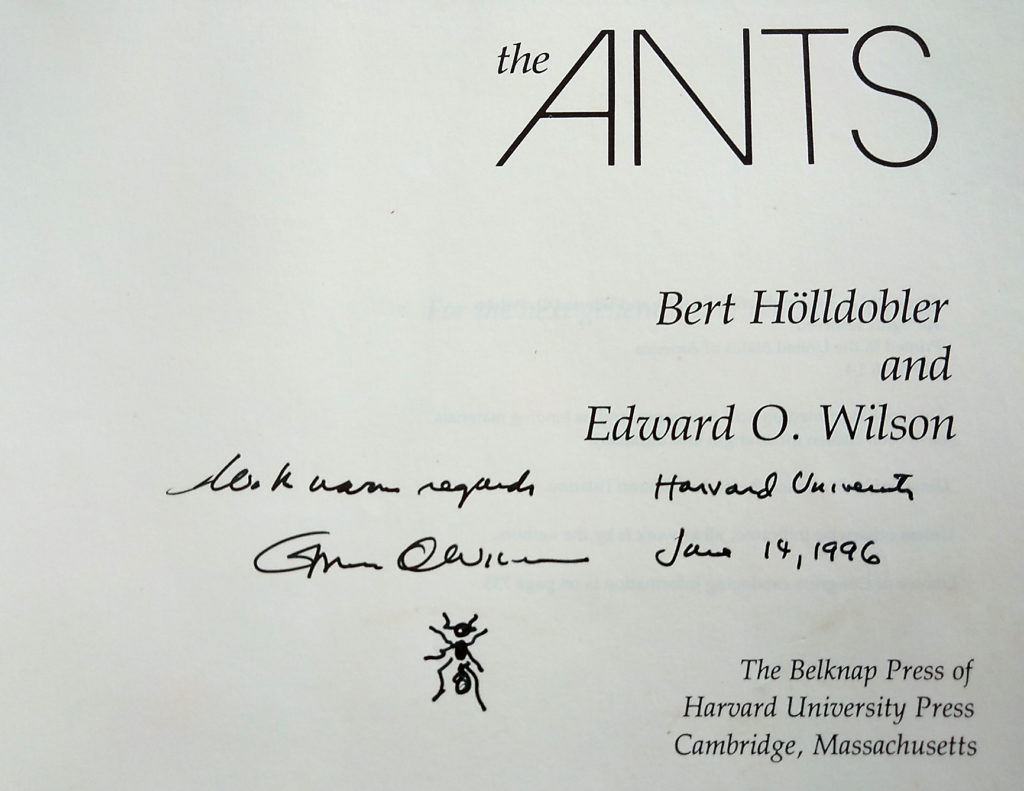




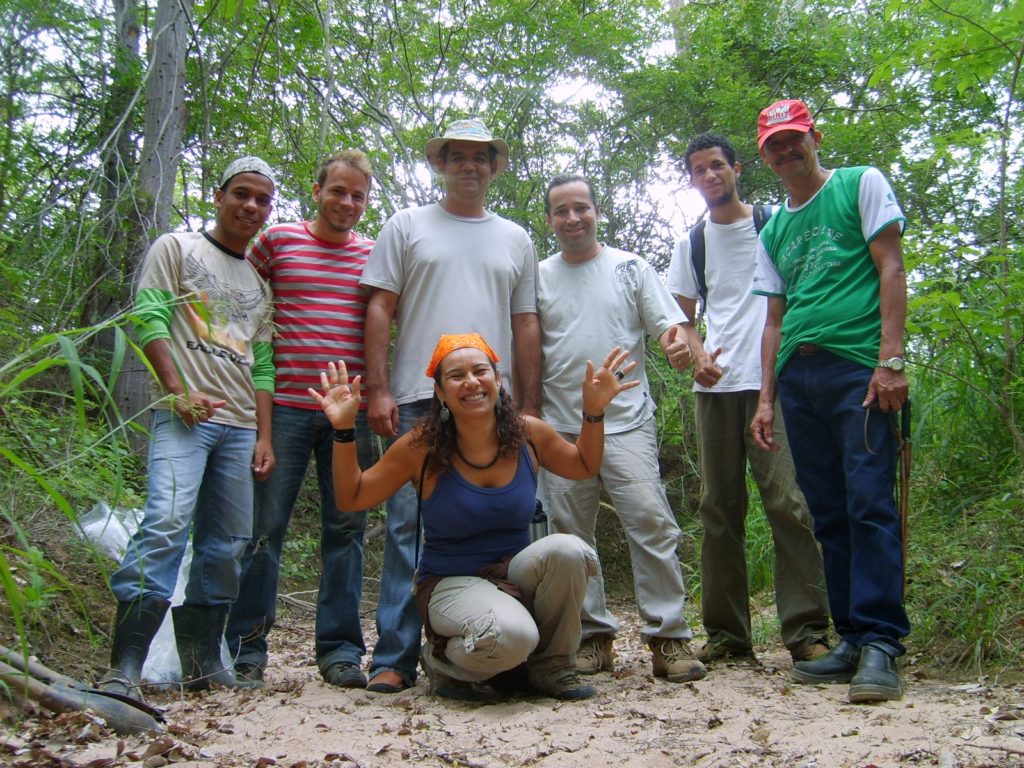

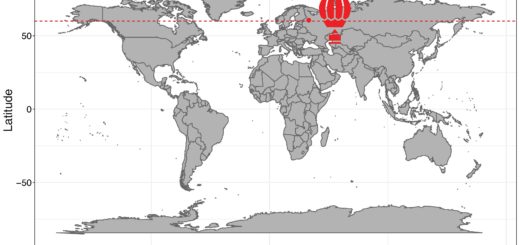
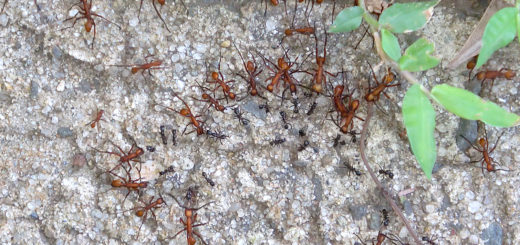
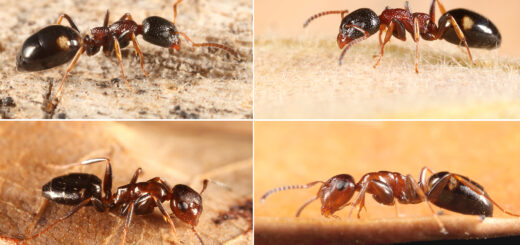
Recent Comments